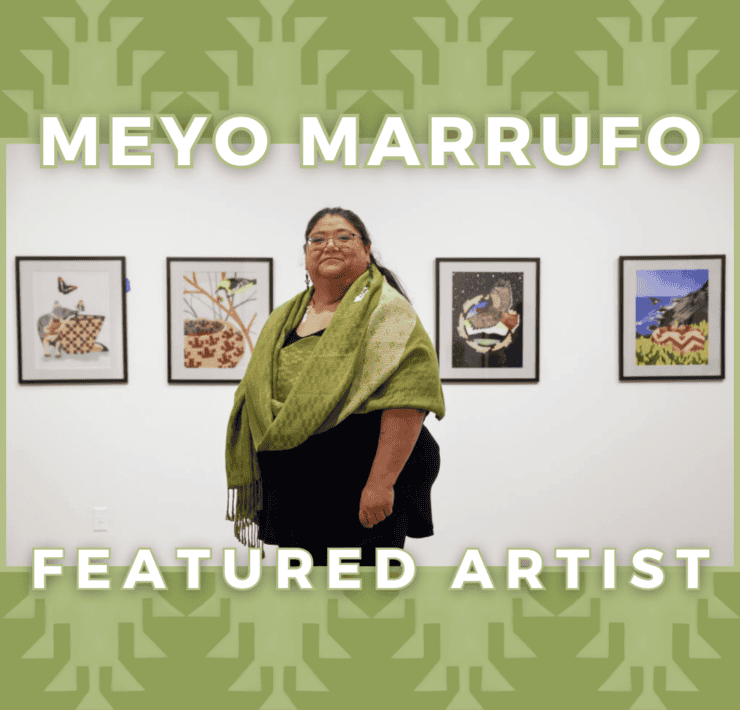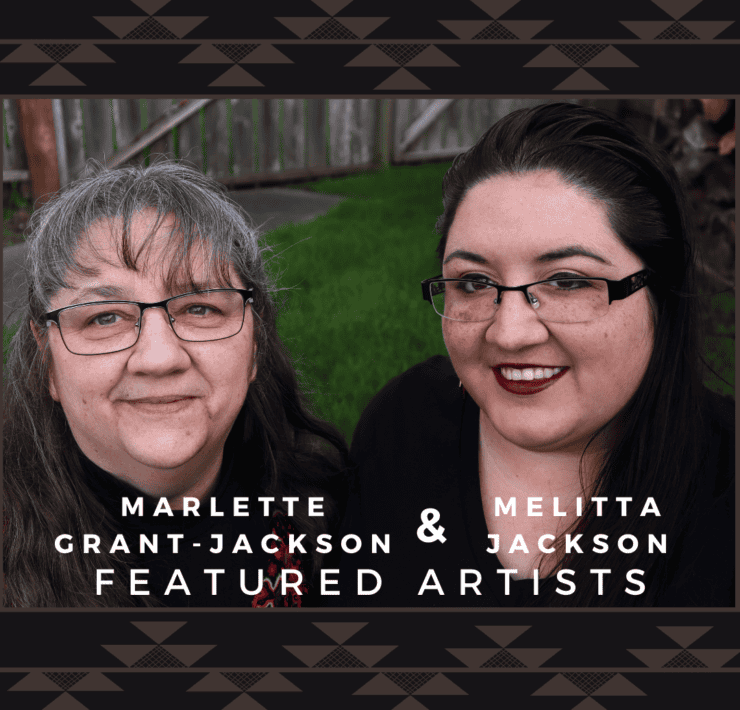
By Meadow Risling as shared with Tavi Lorelle Carpenter
Meadow is an incredibly talented artist and busy momma. In order to accommodate her time, Meadow shared her story over email alongside beautiful photos of her work.
I hope you all enjoy meeting Meadow as much as I have.
Hi! My name is Meadow Risling and I am [a] local [living in] Hoopa, California. I am a Yurok tribal woman but I live on the Hoopa residence.
Growing up my family has always beaded, carved and weaved.
I am an earring maker, necklace maker, hairstick maker.
And I am just learning how to weave!
Question: How has your family history of beading, carving and weaving influenced your work?
Answer:
I learned how to bead in Hoopa Elementary School in California. I am 20 years old now, but what I learned in elementary school really impacted me in my culture. I made my first medallion with the help of Debbie McConnell, in Elementary School. She is one of the greatest weavers I know.
In 2023, I made my first baby rattle with the help of my Auntie Jamie Peters. She is another one of the greatest weavers I know.
Growing up, I was always sent up the road with [earrings made by my mom and aunties]. We didn’t have much back then. I knew if we sold those earrings, we would [could] get a bag of chips or just something to snack on.
Everything I was taught in the past has made an influence on me. [As have] the people I have met on the red road, [who] have influenced me to be better and do better for myself, my culture and my family.
Question: What are some of the place-based materials that you use and what are your favorite materials to work with?
Answer:
I mostly use Dentalium, Red Abalone, California Cedar Berry, California Pine Nuts and Bear Grass when making my jewelry.
I give it that Natinxwe “Hupa” look.
I gather my leather, beads, my Dentalium and Cedar Berries from the Bead Lady in Willow Creek, California-12 miles from Natinxwe “Hupa” Valley.
I gather my Red Abalone cut pieces from Hop Norris. He cuts, tumbles, and polishes the pieces.
My Aunite Jamie has been lending me Bear Grass until [the] next gather.
I’ve been making Dentalium carving readings for pine nuts from one of my fellow friends here in Natinxwe Valley.
Red Abalone has been [by] far [my] favorite [to work] with because of the story behind how she turned red.
[Here is] the story of Abalone and Dentalium:
Abalone was the most beautiful girl in the entire world. She was [a] medicine girl and woman. She [was] loved by all who met her. She was the kindest and most giving woman. Never a bad word was said about Abalone.
Dentalium was the strongest man, [an] excellent hunter, the best fisherman. He was [a] great singer and dancer. He was a stick player and came from [a] Dance Family. All the people admired him.
Eventually Abalone and Dentalium were married. She moved to his village and they began to live as husband and wife.
However, soon after they were married, Dentalium began to beat Abalone. He would beat her for being loved by others, for being kind, for being beautiful. He would beat her for having magic and holding medicine.
This went on for some time with Abalone thinking, “Tomorrow will be different. Tomorrow will be better, Tomorrow, he will love me as he once did”.
[But] tomorrow never came.
One day Abalone told her husband that they needed deer meat. So off for a hunt he went.
As soon as he was gone, Abalone packed u a few items in her burden basket and she started to run.
And as she ran, she began to cry.
She ran and cried for days, for months, for years.
She cried so much that the tears wore holes through her feet and she ran until her feet bled.
And still she ran on.
This is why there are holes in the shells and why abalone from around here is red. They are her footprints.
She ran so that Dentalium could never find her again and [so] she would never have to be beat again.
This is one reason why we do not beat our women because even the most loving [and] caring woman will only put up with that for so long. Just like Abalone, all women must be regarded with honor and dignity, no matter [their] station or status.
And I was taught that this is why we, [the] Yurok people, are not supposed to put Dentalium with Abalone on any bead work together. For it dishonors Abalone and eventually she will crush Dentalium on the strand.
 PIN IT
PIN ITQuestion: Where do you draw inspiration from when you are creating your pieces?
Answer:
I draw inspiration from the nature around me in the valley. I also draw inspiration from people around me and my culture.
After [the] High Mountain Dance, my auntie, Jamie Peters, gave me a ride back to my house on the floor of the valley. We were talking about how expensive [the baby rattle I bought was], she was so shook, she said she [would] help me make one, because the price was a bit steep. So we went and gathered some willow sticks with her granddaughters and [went to] working on it. She guided me through the whole process. I am forever grateful for her, showing me our ways. She sang a song while we were there gathering willow sticks by the river. She said we used to always sing when we came out. My time weaving was a beautiful blessing in my life.
I can’t wait for 2024 gathering trips!
Question: Over the years, has there been a piece you are particularly proud of?
Answer:
Yes, I am very proud of a couple of items I have done!
This one is by far my favorite:
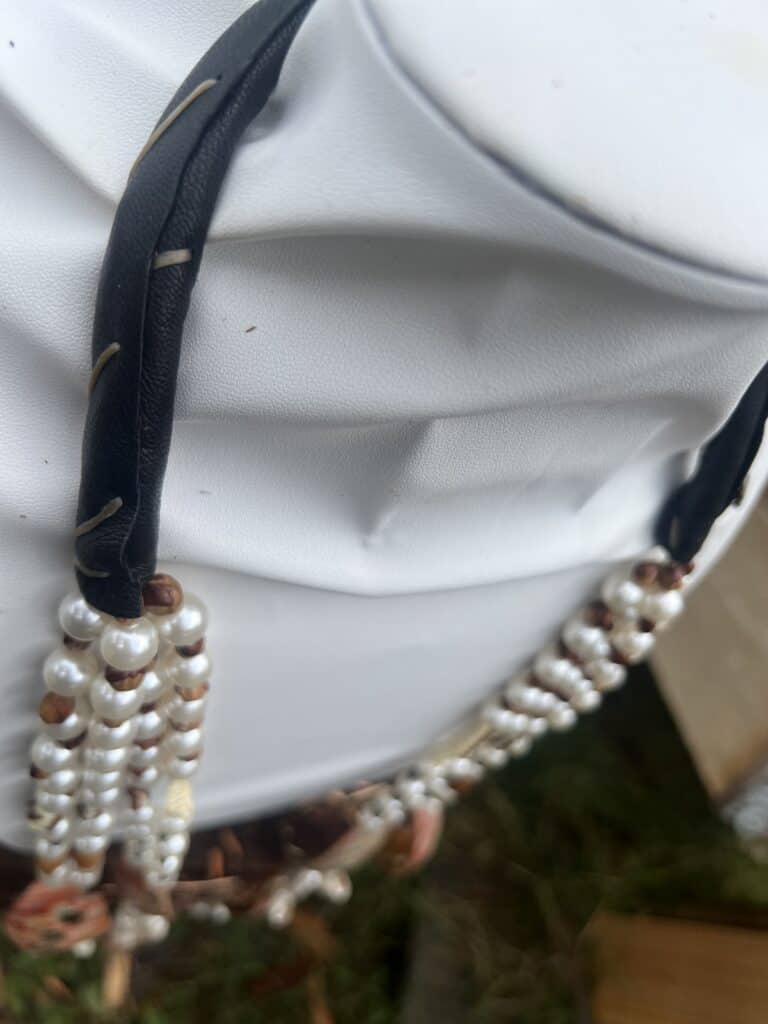
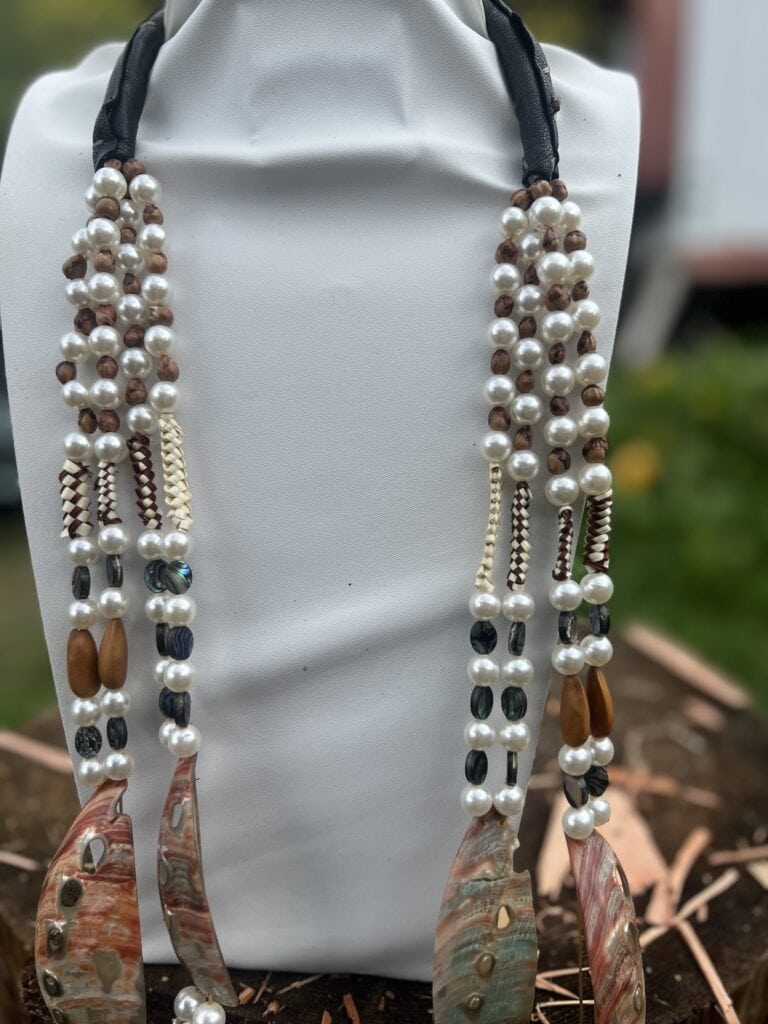
Question: When did you start selling your work? What has that process been like? What challenges or moments of pride have you had as an entrepreneur?
Answer:
I am taught to give [the] first thing you make away as a gift. My mom get [the] first [of] everything I’ve created.
My first sale was in 2022, it has made an influence on me because if it [hadn’t] been for the first people who bought from me, I wouldn’t be where I am today.
The process, in the long run, has been a struggle and a blessing all in one–beyond other responsibilities. I’m moving better as long as I have the mindset, [the] courage, and my loved ones that stick by my side through the journey.
I’ve had a moment of pride when people started messaging me about carving, beading, and braiding. There’s not any challenges throughout beading other than trying to get time for yourself.
Question: What does it mean to you to be a California Native person?
Answer:
I live on a small reservation here, in [the] Northwest [of] California called Natinxwe Valley, “Hupa Valley”. I am proud to be Hupa, Yurok, Karuk, and Lakota. My blood flows through my children, who are my world [and] who I will protect at all cost, they are the future, my future, our future. My world revolves around my culture therefore it will revolve to my children, they will forever know our ways and I will be there to guide them on the path of our old ways.
Question: What is something you’d want readers to know about your work?
Answer:
I want the readers to know that I use all-natural materials, including natural sinew string-one of the main things I use in beading.
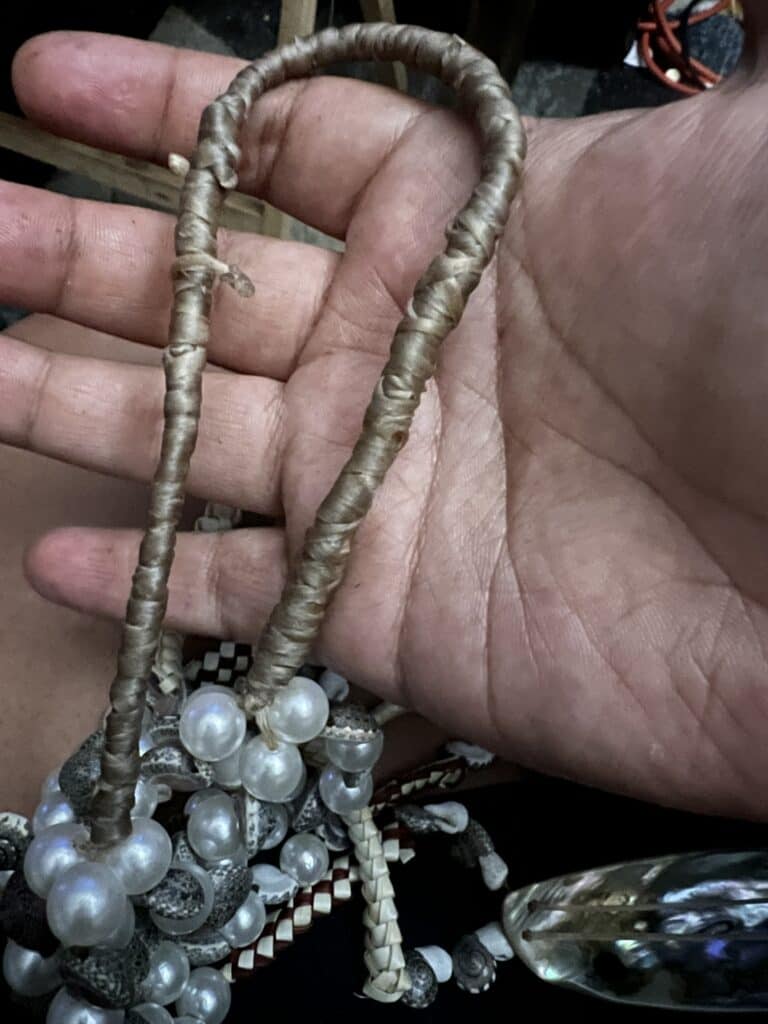
Question: What are some words of wisdom you can share with other Native artists?
Answer:
When times get hard, take a break. Breathe. Go to the river, go for a walk, go enjoy some nature, let some steam off. Because I know if feels to be holding and building stuff up. Sometimes, you [have to] look in reality and breathe.
And tell yourself, everything will be alright.
Be strong, and hold strong.
Question: How can people support you and your beautiful work?
Answer:
[Readers] can support me by supporting my pages and also other Native artists. My instagram page is @nakidilyayby_meadowmay and I also post in our group page [on Facebook] “Local Ca & All Indigenous Crafts”.Thank you Meadow for sharing!

















